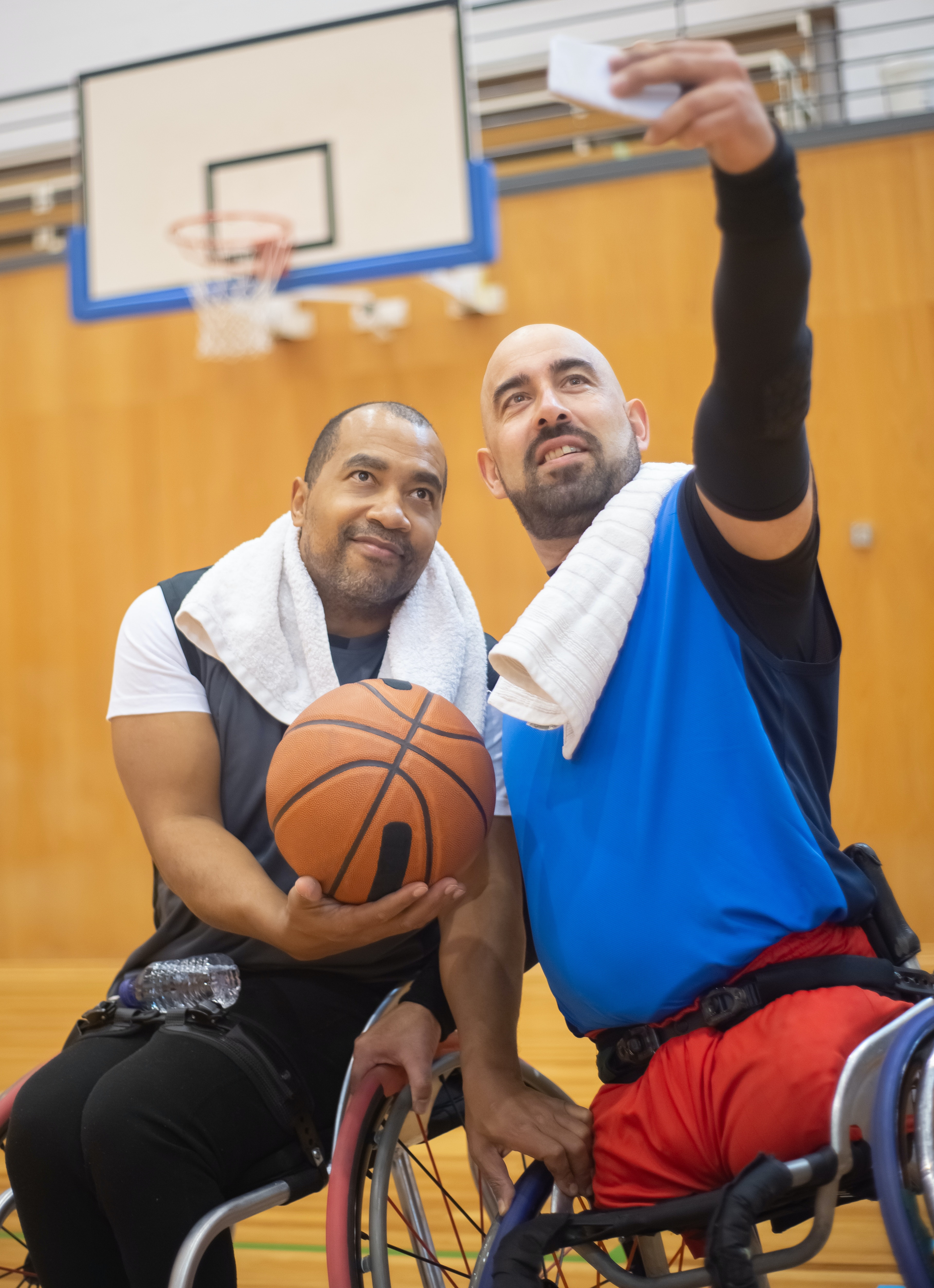Wheelchair Basketball Rules
Wheelchair basketball rules vary slightly based on country, region, division and league in which players compete. Yet, the fundamentals of the game and rules remain consistent (and challenging) where ever you play.
For specific wheelchair basketball rules by country, contact your area wheelchair basketball association and/or one of the following organizations:

While there may be minor adaptations of play, here are some standard wheelchair basketball rules provided by the division of Disabilities and Educational Services of the University of Illinois at Urbana-Champaign.
Player Eligibility
Any individual who, because of permanent severe leg disability or paralysis of the lower portion of the body, will benefit through participation in wheelchair basketball and who would be denied the opportunity to play basketball, were it not for the wheelchair adaptation, is eligible.
Wheelchair Equipment Requirements
The height of the seat must not exceed 21" from the floor. The height of the foot platform or first point of contact must be no more than 4 7/8" from the floor.
Seat cushions are permitted for medical and therapeutic reasons; a medium weight foam rubber is permitted (2" maximum thickness for Class III players and 4" maximum thickness for all other players).
A heel strap of 1 1/2" width (minimum) must be attached to the foot platform bars. Each chair must be equipped with a roll bar or other protective device to ensure against damage to the playing surface.
Contact
The chair is considered a part of the player. Rules of contact in regular basketball (charging, blocking, etc.) apply to wheelchair basketball rules.
Time Limits
An offensive player cannot remain more than 4 seconds in the free throw lane while the player's team is in possession of the ball.
Dribble
A player in possession of the ball may not push more than twice in succession with one or both hands in either direction without tapping the ball to the floor again.

Taking more than two consecutive pushes constitutes a traveling violation. A player, may, however, wheel the chair and bounce the ball simultaneously just as an able-bodied player runs and bounces the ball simultaneously in regular basketball.
Loss of the Ball
If a player in possession of the ball makes any physical contact with the floor or tilts the chair so far backward that the anti-tip (safety) casters touch the floor, it is a violation and the ball is awarded to the other team.
Out-of-Bounds
A player is considered out-of-bounds when any part of the player's body or wheelchair touches the floor on or outside the boundary.
Physical Advantage Foul
Because of the varying causes and manifestations (degrees) of disability among participants, a basic rule of keeping firmly seated in the wheelchair at all times and not using a functional leg or leg stump for physical advantage over an opponent is strictly enforced. An infraction of wheelchair basketball rules (rebound, jump ball, etc.) constitutes a physical advantage foul.
It is so recorded in the official score book. Three such fouls disqualify a player from the game, according to wheelchair basketball rules. Two free throws are awarded and the ball is given to the opposing team, out of bounds.
Falling
If a player falls out of the chair during play, the officials will immediately suspend play if there is any chance of danger to the fallen player. If not, the officials will withhold their whistles until the particular play in progress has been completed.
If a player falls out of the chair to gain possession of the ball or by falling keeps opponents from gaining possession of the ball, the ball is awarded to the opposing team.
Player Classification
Wheelchair basketball rules include player classifications as follows.
- Class I - Complete motor loss at T-7 or above or comparable disability where there is total loss of muscle function originating at or above T 7.
- Class II - Complete motor loss originating at T-8 and descending through and including L-2 where there may be motor power of hips and thighs. Also included in this class are amputees with bilateral hip disarticulation.
- Class III - All other physical disabilities as related to lower extremity paralysis or paresis originating at or below L-3. All lower extremity amputees are included in this class except those with bilateral hip disarticulation (see Class II).
Team Balance
Each classification will be given a numerical value or factor as follows: Class 1: 1 value point Class II: 2 value points Class III: 3 value points. At no time in a game shall a team have players participating with total points greater than twelve (12) on the floor at the same time.
Control and Enforcement of Wheelchair Basketball Rules
The official scorer is responsible for seeing that personnel on the floor for either team at any time does not exceed the twelve (12) points. (This only has to be checked at the start of each half and at the time of substitutions.)
At any time during the game, if it is identified that a team exceeds the "player point limit," a Technical Foul is called against the team in violation and handled as all other Technical Fouls, with a correction in the lineup being made at that time.
Source for wheelchair basketball rules: Division of Disabilities and Educational Services of the University of Illinois at Urbana-Champaign (https://www.disability.illinois.edu)
Related Information - Wheelchair Basketball Rules
Wheelchair Sports Resources
Extreme Wheelchair Sports
Wheelchair Tennis
Sports Wheelchair Information
Wheelchair Rugby
Popular ArticlesTypes of Mobility Chairs Wheelchair Sports Activities Helpful Resource Organizations Mobility Scooter Buying Tips Portable Ramp Options |


